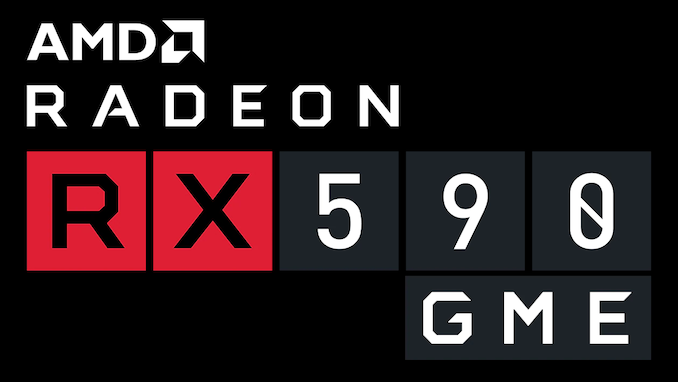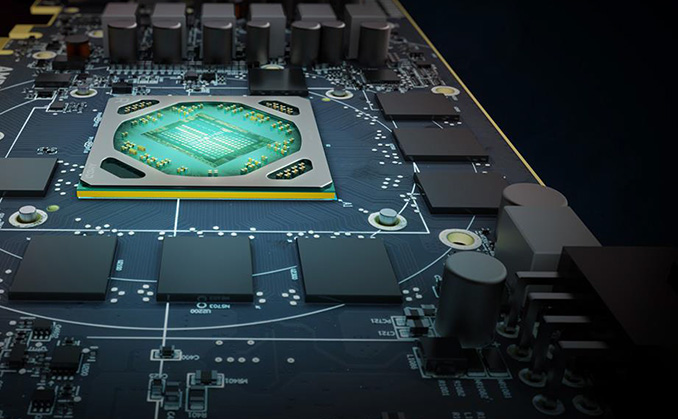While AMD’s Polaris family of GPUs have surprised us in a few different ways, perhaps the most impressive aspect has been their sheer longevity. First introduced in 2016 as a 14nm update to AMD’s GPU lineup, the GCN 3-derrived chips were the backbone of AMD’s mainstream video cards for over three years. And while it seemed like they’d finally be put out to retirement with the launch of AMD’s 7nm Navi chips late last year, Polaris is getting (another) new lease on life, this time in a video card that’s being released exclusively in China.
Dubbed the Radeon RX 590 GME, the new card isn’t receiving any formal fanfare for its release. But AMD has added it to their product stack and updated their Chinese-language pages accordingly.
So what is Radeon RX 590 GME exactly? Unfortunately, as has become a recurring theme with China-only video cards, AMD and its partners are playing fast and loose with product names. Despite the name, the RX 590 GME is notably slower than a proper RX 590 – about 10% slower, on paper – making it an RX 590-lite at best, and an overclocked RX 580 at worst.
| AMD Radeon RX Series Specification Comparison | ||||||
| AMD Radeon RX 590 GME | AMD Radeon RX 590 | AMD Radeon RX 580 | AMD Radeon RX 5500 XT | |||
| CUs | 36 (2304 SPs) |
36 (2304 SPs) |
36 (2304 SPs) |
22 (1408 SPs) |
||
| Texture Units | 144 | 144 | 144 | 88 | ||
| ROPs | 32 | 32 | 32 | 32 | ||
| Base Clock | 1257MHz | 1469MHz | 1257MHz | 1607MHz | ||
| Game Clock | N/A | N/A | N/A | 1717MHz | ||
| Boost Clock | 1380MHz | 1545MHz | 1340MHz | 1845MHz | ||
| Throughput (FP32) | 6.4 TFLOPs | 7.1 TFLOPs | 6.2 TFLOPs | 5.2 TFLOPs | ||
| Memory Clock | 8 Gbps GDDR5 | 8 Gbps GDDR5 | 8 Gbps GDDR5 | 14 Gbps GDDR6 | ||
| Memory Bus Width | 256-bit | 256-bit | 256-bit | 128-bit | ||
| VRAM | 8GB | 8GB | 8GB | 4GB/8GB | ||
| Transistor Count | 5.7B | 5.7B | 5.7B | 6.4B | ||
| Typical Board Power | N/A | 225W | 185W | 130W | ||
| Manufacturing Process | GloFo 14nm? | GloFo/Samsung 12nm | GloFo 14nm | TSMC 7nm | ||
| Architecture | GCN 4 | GCN 4 | GCN 4 | RDNA (1) | ||
| GPU | Polaris 20? | Polaris 30 | Polaris 20 | Navi 14 | ||
| Launch Date | 03/09/2020 | 11/15/2018 | 04/18/2017 | 12/12/2019 | ||
| Launch Price | N/A | $279 | $229 | $199/$169 | ||
In fact, while AMD hasn’t confirmed which specific Polaris GPU the card is using, the specifications are closer to an RX 580 (Polaris 20) than they are an RX 590 (Polaris 30). The RX 590 GME ships with the RX 580’s 1257MHz base clock, but offers a 40MHz higher boost clock, topping out at 1380MHz. The card’s (listed) specifications are otherwise identical to the 590/580, including a full 36 CU configuration and 8GB of GDDR5 VRAM on a 256-bit bus that’s clocked at 8Gbps.
Otherwise, unverified third-party reports have claimed that the card is indeed using Polaris 20, and these specifications would be consistent with that.
On paper, this puts the peak performance of the card at just less than 3% ahead of the RX 580, which is similar to what AMD’s partners have previously been doing with their own factory overclocked cards. So the performance of the RX 590 GME is by and large a known quantity at this point, with the card set to offer just a bit more performance than AMD's well-tenured RX 580.
The big question, of course, is why AMD is releasing another Polaris 10/20/30 card almost 4 years after the GPU was first launched. With previous China-only cards this has been to fill specific market needs or to sell off excess stock, and both may be a factor here. Within AMD’s product stack, RX 580-class cards in particularly are wholly redundant; the newer 8GB RX 5500 XT delivers 8% better performance than those cards, which means the new RX 590 GME is going to be slower than AMD’s slowest 8GB Navi cards.
What the RX 590 GME offers that the RX 5500 XT doesn’t however is ease of availability. AMD continues to be somewhat capacity constrained on TSMC’s 7nm process – they have a lot of CPU demand to fill, never mind GPUs – whereas if AMD needed to fab more chips, GlobalFoundries’ 14nm lines are readily available. Furthermore, the RX 590 GME enjoys a lower bill of materials cost as far as memory is concerned: whereas the RX 5500 XT uses newer (and still more expensive) GDDR6, the Polaris-based 590 uses more readily available GDDR5.
Ultimately, while China is still a growing market for technology – both in terms of total scale and in how much consumers have to spend on individual products – it’s still primarily a market dominated by mainstream parts. So if AMD is looking to scrape together a cheaper offering to compete on a purely price/performance basis – and especially if they still have leftover chips lying around – then they could do worse than another Polaris 20 card. That said, they could definitely do better as far as the product name goes.
from AnandTech https://ift.tt/2wRucY5
via IFTTT


0 comments:
Post a Comment